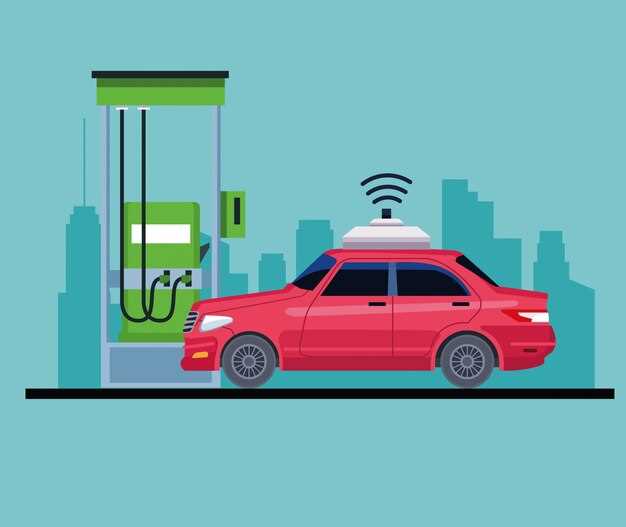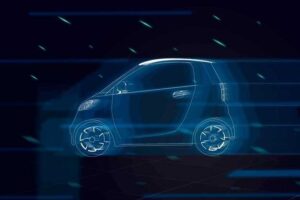Wireless charging for electric cars relies on technology known as inductive charging. This method utilizes electromagnetic fields to transfer energy between two coils: a transmitter coil embedded in the charging station and a receiver coil installed in the vehicle. By aligning these coils, drivers can charge their vehicles simply by parking, eliminating the need for physical connectors.
These systems can operate at various power levels, typically ranging from 3.5 kW to over 22 kW. For everyday charging needs, lower power levels suffice, allowing for overnight charging at home. However, high-power systems promise faster charging times, making it more convenient for public charging stations and reducing downtime for drivers.
Incorporating smart technology enhances the user experience. Vehicle sensors communicate with the charging station, confirming correct alignment and optimizing power transfer. This automation streamlines the process, increasing efficiency and minimizing manual setup. Furthermore, advancements in safety features ensure that systems can detect foreign objects on the pad, preventing overheating or damage.
Infrastructure development plays a pivotal role in the widespread adoption of wireless charging. Cities are beginning to explore embedding charging pads in roadways, which would enable electric vehicles to charge while in motion. These innovations open the door to more practical charging solutions, significantly enhancing the appeal of electric vehicles.
Understanding the Basics of Inductive Charging Technology
Inductive charging relies on electromagnetic fields to transmit energy from a charging station to an electric vehicle (EV). This technology consists of two main components: the transmitter, located in the charging pad, and the receiver, installed in the car. When the vehicle is parked over the charging pad, an alternating current generates a magnetic field that induces a current in the receiver coil, converting it into direct current to charge the battery.
Key advantages include convenience and safety. Users simply park their cars over the charging pad without needing to connect wires. The absence of physical contacts reduces wear and tear, enhancing reliability. Safety features, like automatic shut-off systems, ensure that charging stops when the vehicle is not properly aligned with the pad.
Efficiency is another important aspect. Current technology achieves around 85-90% efficiency under optimal conditions. It is critical to position the vehicle accurately over the charging pad to maintain this efficiency. Innovations continue to improve charging speeds and reduce energy loss, making inductive charging more practical for everyday use.
As public charging infrastructure develops, integrating inductive charging with existing systems becomes increasingly feasible. Smart technology can facilitate this integration, allowing for real-time updates and tracking energy consumption. Compatibility between different vehicle models will also enhance user experience and accessibility.
In summary, understanding inductive charging technology reveals its potential to simplify electric vehicle charging while maintaining safety and efficiency. As advancements continue, this method could become a standard practice for powering electric cars in the coming years.
Components of a Wireless Charging System for EVs
Wireless charging systems for electric vehicles (EVs) consist of several key components that work together to ensure seamless power transfer. Understanding these elements helps in grasping how this technology operates.
- Ground Pad: This component is embedded in the parking surface and contains transmitter coils that generate an alternating electromagnetic field when energized. It provides the necessary connection to the power grid.
- Vehicle Receiver: Located beneath the EV, the receiver consists of coils that capture the electromagnetic field emitted by the ground pad. It converts it into direct current (DC) to charge the vehicle’s battery.
- Power Control Unit: This unit regulates the power flow between the ground pad and the vehicle receiver. It ensures safety and prevents overcharging by communicating with the vehicle’s battery management system.
- Alignment System: To maximize efficiency, wireless charging systems often incorporate alignment features, such as guide rails or camera systems. These assist drivers in positioning the vehicle correctly over the ground pad.
- Cooling Systems: Both the ground pad and vehicle receiver require cooling mechanisms to dissipate heat generated during the energy transfer process. Effective cooling ensures longevity and reliability of the components.
By integrating these components, wireless charging systems enhance convenience for EV users. With advances in technology, these systems are becoming increasingly practical for everyday use.
Installation Requirements for Home and Public Charging Stations
Install a Level 2 charging station at home for faster charging times. Ensure your electrical panel can support at least 40 amps, which is typical for residential setups. If necessary, consult a licensed electrician to upgrade your panel or circuit.
Choose a location with easy access to your electric vehicle. Position the charger close to where you park, ensuring adequate space for safe operation. Avoid locations that block pathways or impede traffic.
For public charging stations, secure permits from local authorities. Follow zoning regulations and obtain necessary approvals to install stations in commercial or public areas. Collaborate with local utility providers to discuss grid impact and power supply requirements.
Ensure that charging stations are equipped with proper connectivity for network monitoring and payment options. Select chargers compatible with common electric vehicle models to maximize utilization.
Consider outdoor weatherproofing and user-friendly interfaces. Install canopies or shelters to protect public chargers from the elements, enhancing convenience for users.
Prioritize signage and accessibility. Clearly label chargers and provide instructions for use, including payment methods and support contacts. Ensure that charging stations are accessible to individuals with disabilities.
Regular maintenance checks keep charging stations functional and safe. Establish routine service schedules to address wear and tear, ensuring a reliable experience for users.
Charging Speed Comparisons: Wireless vs. Plug-in Methods
Wireless charging for electric cars typically provides lower power transfer rates compared to plug-in methods. Most wireless charging systems offer around 3.3 kW to 11 kW, suitable for overnight charging. By contrast, plug-in chargers can deliver power levels ranging from 7 kW to 350 kW, allowing for much faster recharging, particularly with DC fast chargers.
For example, a Level 2 plug-in charger at 22 kW can charge a vehicle’s battery significantly faster than most wireless options. A standard electric vehicle might take approximately 4 to 8 hours to fully charge using a 7 kW home charger, while fast chargers can reduce this time to as little as 30 minutes for an 80% charge.
Wireless systems, though convenient, depend on alignment between the vehicle and charging pad, which may cause slight efficiency losses. Plug-in methods ensure a direct connection, maximizing energy transfer. As a result, if time efficiency is a top priority, plug-in charging remains the superior choice.
However, the convenience of wireless charging appeals to many drivers, especially in urban settings, where drivers can charge while parked without dealing with cables. For those looking to optimize both convenience and speed, a hybrid approach–using both methods as needed–may be the most practical solution.
Maintenance and Safety Considerations for Wireless Chargers
Regular maintenance enhances the longevity and functionality of wireless chargers. Inspect the charging pads for debris or damage before each use. Clean the surface with a microfiber cloth to ensure optimal contact between the vehicle and the charger.
Monitoring the temperature of the charger is crucial. Excess heat can indicate malfunction or inefficiency. If the charger feels excessively warm during operation, discontinue use and consult a technician.
Check for any signs of wear on the charging cables and connectors. Frayed or damaged cords may pose a safety hazard and should be replaced immediately. Avoid using the charger in wet conditions unless specifically designed for outdoor use.
| Tip | Description |
|---|---|
| Routine Cleaning | Use a dry cloth to remove dust and debris from charging surfaces. |
| Overheating Alerts | Monitor temperature; discontinue use if overheating occurs. |
| Cable Inspection | Regularly check cables for damage and replace frayed units. |
| Weather Considerations | Avoid charging in wet or extreme weather unless specified safe. |
Implementing safety features, such as automatic shutoff systems, can prevent accidents. Ensure the system is compliant with local regulations and standards for electromagnetic emissions. Engaging in regular training for users on safe practices enhances overall safety.
Adhering to manufacturer guidelines guarantees safe operation. Keep updated on any firmware updates or recalls related to the charging system, as these can impact performance and safety. Regular communication with the manufacturer or service providers ensures that you remain informed on best practices.
The Future of Wireless Charging: Trends and Innovations
Integrate wireless charging stations into urban infrastructure for seamless charging experiences. Cities with high vehicle density will benefit from strategically placed charging pads in parking lots, on streets, and at public transit hubs.
Adopt dynamic charging technology that allows vehicles to charge while driving. This innovation ensures continuous power supply without the need for frequent stops, enhancing travel convenience and reducing range anxiety.
Encourage manufacturers to develop compatibility standards for wireless charging systems. Unified protocols will simplify user experiences, allowing all electric vehicles to utilize various charging stations without compatibility issues.
Explore advancements in coil design to increase efficiency and charging speed. Research into high-frequency magnetic fields and improved materials can lead to reduced energy loss during the transfer process.
Utilize renewable energy sources to power charging stations. Solar panels and wind turbines can provide eco-friendly power, making wireless charging a sustainable option for electric vehicle users.
Invest in smart charging solutions that incorporate IoT technology. These systems can optimize charging times based on grid demand, ensuring that charging occurs during off-peak hours and reducing energy costs.
Monitor market trends like the adoption of vehicle-to-grid (V2G) technology. This innovation fosters energy exchange between electric vehicles and the grid, allowing vehicles to act as temporary energy storage units.
Encourage research into safety measures to prevent accidents and ensure user confidence in wireless charging solutions. This includes implementing guidelines for electromagnetic field exposure and thermal management systems.
Lastly, support partnerships between automotive manufacturers and tech companies. Collaboration will drive integration of innovations in wireless charging technology, enhancing the growth and accessibility of electric vehicle infrastructure.






